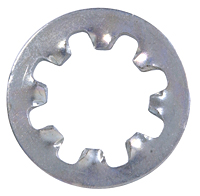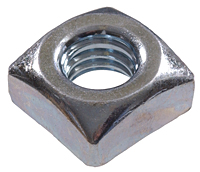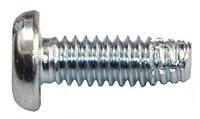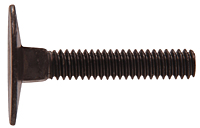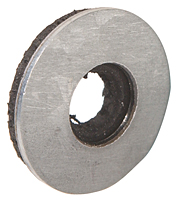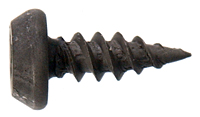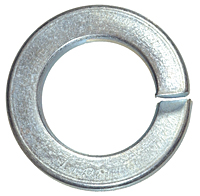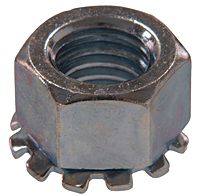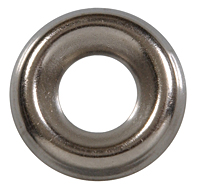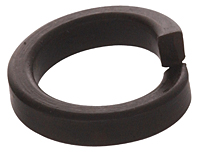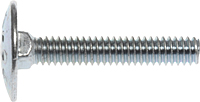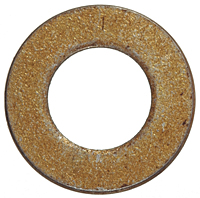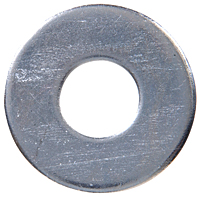 The welding rod is the piece of wire connected to the welding machine. A current is fed through this wire, which helps to join two pieces of metal together firmly.
The welding rod is the piece of wire connected to the welding machine. A current is fed through this wire, which helps to join two pieces of metal together firmly.
In certain cases – namely SMAW and stick welders – the wires actually melt, becoming part of the weld itself. These welding rods are referred to as consumable electrodes. For TIG welding, the welding rods do not melt, so are called non-consumable electrodes. Within both of these groups, there are many different variations and types, which will be covered in more detail later.
Welding rods are usually coated, although the materials that make up this coating can vary widely. Bare electrodes (those made without any additional coatings) are also available, although they’re much less common. These are used for certain specific jobs, such as welding manganese steel.
It is important to choose the right type of welding rod for your job in order to create clean, strong welds with excellent bead quality.
Consumable electrodes
As mentioned previously, stick welders usually use consumable welding rods, which will be referred to as stick electrodes here. These include light coated electrodes, as well as shielded arc or heavy coated electrodes.

As the name suggests, light coated electrodes have been finished with a thin coating which has been applied by techniques such as brushing and spraying. This is usually made up of a combination of several different materials, which are likely to be similar to the metals which you are welding together.
The arc streams created when using bare rods can be difficult to control, so if your job allows it then using a light coated electrode increases the arc stability. This will make your life quicker and easier.
However, that is not the only purpose behind having a light coating on the welding rods. Other benefits of using light coated electrodes are that impurities such as oxides and sulfur are reduced (or eliminated altogether), the drops of metal at the end of the welding rods are more regular in both size and frequency – meaning that your welds are smoother and neater – and they only produce a thin slag.
Shielded arc electrodes are similar to light coated electrodes, except for the fact that they have a heavy coating. Due to their tougher, heavy duty nature, they are better suited to applications such as welding cast iron.
There are three different types of coating applied to shielded arc electrodes, which each have different results during the welding process. Firstly, there are those with coatings containing cellulose, which uses a layer of gas to protect the weld zone; the coatings on the second type include mineral substances, which leave a layer of slag. The third type of coating on shielded arc electrodes is made up of a combination of cellulose and minerals.
Shielded arc electrodes which form a layer of gas are ideal because they act as a highly effective protective barrier, resulting in strong welds. The weld pool needs to be protected from certain atmospheric gasses (namely oxygen and nitrogen), which affect the welds and make them weak, porous and brittle. This protection can either be given through the use of a coated welding rod, or through a blast of gas which can separate the weld pool from the air (as described in the cellulose-coated shielded arc electrodes).
Just like light coated electrodes, shielded arc electrodes reduce oxides, sulfur and other impurities in the metal, leaving clean, smooth, regular welds. In addition, the weld arcs created by these welding rods are much easier to control than bare electrodes, which are prone to causing lots of spatter.
It might seem like a hassle if you opt for a mineral-coated shielded arc electrode which forms a slag, but, in fact, this slag can have a beneficial effect. It cools slowly – much slower than cellulose-coated shielded arc electrodes – which draws impurities up to the surface. As a result, you’ll end up with high-quality welds which are strong, durable and clean.

The shielded arc electrode welding process
Types of Welding Rods
Non-consumable electrodes
Luckily, non-consumable welding rods are slightly easier to understand, mainly because there are only two types.Firstly, carbon electrodes are usually used in arc welding and cutting; they are made of carbon graphite and may be left bare or coated with a layer of copper. In contrast with many other types of welding, the AWS (American Welding Society) does not provide any specifications for carbon electrodes, but the military has given a list of guidelines for optimum sizes based on the job requirements.
Secondly, tungsten electrodes are the type of non-consumable electrode used in TIG welding. They are either made from pure tungsten (which is marked in green), tungsten with 1% thorium (which is marked in yellow), tungsten containing 2% thorium (which is marked in red) and tungsten with a 0.3-0.5% zirconium content (which has brown markings).
Pure tungsten electrodes are usually used on lighter welding applications. The reason for this is twofold: it doesn’t have the same strength and durability of alloys, and it isn’t suitable for welding with a high current.
Tungsten electrodes containing 0.3-0.5% zirconium can provide great results when using an alternating current, but otherwise, it is generally considered that they are more effective than pure tungsten, but less effective than those containing thorium.
Tungsten electrodes which contain 1 or 2 percent thorium are the most common types of non-consumable electrodes because they are more resistant and last longer than other types. They can be used with higher currents than pure tungsten electrodes, they’re easier to start, and they provide better control of the arc while welding.
When it comes to using tungsten electrodes, you’ll have to use the maximum possible current if they’re kept in a standard cylindrical shape, otherwise, it will be too difficult to maintain the arc. To make your life easier and regain control of the arc, grind the electrodes to a point – but bear in mind that if you do so, you should opt for touch-starting rather than using direct current welding machines. If you do decide to touch-start your TIG welding with tapered tungsten electrodes, those combined with thorium and zirconium will have longer lives than pure tungsten welding rods.

Welding rod classification
Now that you understand the basics of different welding rod types, it’s possible to look in closer detail at the welding rod classification system. This applies to stick electrodes and considers their diameter, material used for the coating, tensile strength, the welding position for which they are most suited, and the percentage of iron powder in the electrode.
Consumable electrodes cannot be thicker than the metals which you’re welding; 3/32 inch is the diameter which you’ll come across most often, but the sizes can range from as small as 1/16 inch to as much as five times larger.
With regards to the tensile strength, this refers to the amount of force which the weld can withhold. In order for the join to remain secure and durable, the weld needs to be stronger than the materials which you’ve used, which means that the materials used within the electrode must also be stronger than the metals. If you use an electrode which contains weaker materials than the metal, it will be almost impossible to create a strong, durable weld joint in a neat, clean, smooth way.
The percentage of iron powder in the wire is important because it will be turned into steel when heated up during welding. As a result, more iron powder means that there will be more molten metal which you can use in the weld. You should always be aware of the iron powder content, but bear in mind that you’re unlikely to find a percentage higher than 60.
With those points in mind, we can now consider the fact that many electrodes will bear a code starting with the letter ‘E’, followed by 4 or 5 digits (such as E6010). This is far more than just a code: break down the different elements to classify any welding rod.
For starters, the letter ‘E’ stands for ‘electrode’. Take note of this, just to make sure that you’re using the right piece of kit for the job!
Moving on to the numbers, the first 2 digits (or 3, if the entire code contains 5 digits) give an indication of the material’s tensile strength. If the number is 60, it means that it can withstand 60,000 pounds per square inch; if the number is 70, the weld will be able to withstand 70,000 pounds per square inch.
The penultimate digit in the code will either be a 1 or a 2, and it signifies the positions in which you can use the welding rod. If you see the number 1, you’ll know that you have an all-position rod – it can be used for flat, vertical, horizontal and even overhead welds. However, if you see the number 2, your welding rod can only be used in flat and horizontal positions.
The final digit should be read in conjunction with the second-to-last number: together, these will tell you which type of coating has been used on the welding rod, and so which welding current to use. See the table below for a full list.

A useful table for identifying stick electrode coatings and the necessary welding currents based on the last two digits of the classification code
The thought of all the possible permutations and combinations is enough to make you balk, but you’ll be pleased to know that there is only a small number of commonly used welding rods. The electrodes which you’re most likely to come across are E6010, E6011, E6013, E7018, and E7024.
If you come across an electrode which has the letter ‘R’ at the end of its classification, it will be more resistant to moisture than any electrode that does not have this suffix.
Direct current vs alternating current
Regardless of the type of welding which you are using, the specifics of the welding machine, or which welding rod type you have chosen, you should always follow the manufacturer’s guidelines. That said, as a general rule, most shielded arc electrodes are designed for direct current use, but can also be used with alternating current.
Direct current is suitable for jobs which use one carbon electrode because the welding rod will have the longest possible life. Alternating current, on the other hand, is recommended for jobs which use two carbon electrodes, because it allows the welding process to run very smoothly and regularly.
Welding rod storage
 In order to maintain your equipment, it’s essential that you store your electrodes in a place where they’ll be flat, straight and bone dry. This is because bending and moisture can damage the coating (unless you’re using a bare electrode), which will ultimately lead to ineffective electrodes and weak, porous welds. If your electrodes are exposed to moisture, they should be placed in a very hot oven to dry them out completely.
In order to maintain your equipment, it’s essential that you store your electrodes in a place where they’ll be flat, straight and bone dry. This is because bending and moisture can damage the coating (unless you’re using a bare electrode), which will ultimately lead to ineffective electrodes and weak, porous welds. If your electrodes are exposed to moisture, they should be placed in a very hot oven to dry them out completely.









